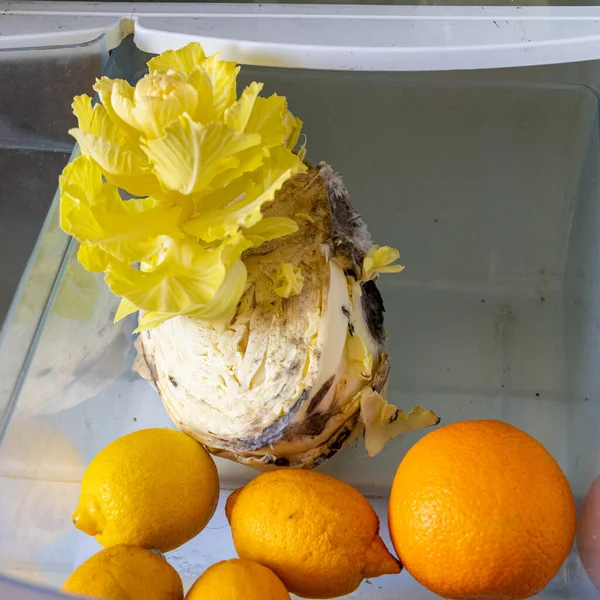Mold growth in the refrigerator can be a concerning issue as it poses health risks and can contaminate food. Knowing how to clean mold from the refrigerator is essential for maintaining a safe and healthy environment. In this article, we will guide you through the process of effectively removing mold from your refrigerator.
Understanding Mold and its Health Risks

Understanding mold and its health risks is vital when dealing with mold in a refrigerator. Comprehending the dangers posed by mold and its impact on health is imperative when faced with mold infestation in a refrigerator.
Mold can trigger allergies, cause respiratory issues, and even lead to infections in vulnerable individuals. Mold has the potential to elicit allergic reactions, induce respiratory problems, and even result in infections among those who are susceptible.
Proper knowledge of mold prevention, identification, and removal techniques is essential to maintain a safe and healthy environment. Acquiring adequate knowledge of effective measures to prevent, identify, and eliminate mold is crucial in upholding a secure and wholesome environment.
Health Risks Associated with Mold
Exposure to mold poses various health risks associated with mold, including respiratory issues, allergies, and infections. Symptoms may include coughing, wheezing, nasal congestion, and skin irritation. Long-term exposure can lead to more severe conditions. It is essential to address mold infestations promptly to avoid these health risks associated with mold.
Identifying Mold in the Refrigerator
Discovering mold in your refrigerator can be a real nightmare. In this section, we will dig into the various types of mold commonly found in refrigerators, learn how to recognize the telltale signs and symptoms of mold infestation, understand the precautions to take before diving into cleaning, and follow a step-by-step guide to effectively remove mold from your refrigerator.
Don’t let mold ruin your food and your peace of mind – let’s tackle this issue head-on and get your fridge back to a healthy, mold-free state!
Common Types of Mold Found in the Refrigerator
Black mold, green mold, and pink mold are common types of mold found in the refrigerator. These molds, including black mold (also known as Stachybotrys chartarum), green mold (like Penicillium), and pink mold (or Aureobasidium), are known to cause various health issues. Black mold can lead to respiratory problems, while green mold has the potential to produce mycotoxins.
On the other hand, pink mold can trigger allergies. Therefore, it is crucial to promptly identify and remove these common types of mold found in the refrigerator to prevent health risks and maintain a clean environment.

Signs and Symptoms of Mold Infestation
Signs and Symptoms of Mold Infestation in the refrigerator can include a musty odor, the presence of visible mold growth on food or surfaces, and potential allergic reactions such as sneezing or coughing. It is crucial to promptly clean any mold you notice to prevent further contamination.
To ensure a clean and healthy environment for storing food, it is advisable to regularly clean and maintain your refrigerator, thus preventing the growth of mold.
Precautions to Take Before Cleaning
Before cleaning mold from the refrigerator, it is important to take precautions to ensure your safety and prevent further contamination. The following steps should be followed:
1. Wear protective gear such as gloves, goggles, and a mask to avoid direct contact with mold spores.
2. Open windows or use a fan to improve ventilation while cleaning.
3. Remove any food items or containers from the refrigerator to prevent cross-contamination.
4. Clean and sanitize any utensils or cleaning tools used during the process.
5. Keep children and pets away from the area to avoid exposure to harmful chemicals.
By taking these precautions before starting the cleaning process, you can effectively and safely remove mold from your refrigerator.
How to Clean Mold from the Refrigerator
- Gather the necessary supplies: gloves, face mask, bleach, water, scrub brush, and a clean cloth.
- Precautions to take before cleaning: ensure proper ventilation, cover food to prevent contamination, and unplug the refrigerator.
- Remove all items from the refrigerator and discard any spoiled food.
- Mix a solution of 1 part bleach to 10 parts water.
- Dip the scrub brush in the bleach solution and scrub the moldy areas in the refrigerator.
- Rinse the scrub brush and wipe away any remaining mold.
- Use a clean cloth soaked in the bleach solution to wipe down all surfaces inside the refrigerator.
- Leave the refrigerator open to air dry completely.
Preventing Mold Growth in the Refrigerator
Mold growth in the refrigerator can be a real headache, but there are ways to prevent it. In this section, we’ll explore some practical tips that will help you maintain a mold-free refrigerator. From easy cleaning techniques to clever storage strategies, these subsections will provide you with valuable insights on how to keep your refrigerator fresh and free from dreaded mold. So, let’s dive in and discover the keys to a clean and healthy fridge!
Tips for Maintaining a Mold-Free Refrigerator
Here are some tips for maintaining a mold-free refrigerator:
- Regularly clean and sanitize the refrigerator, including shelves, drawers, and door seals.
- Check for any leaks or moisture buildup and promptly address the issue to prevent mold growth.
- Properly store food items, avoiding overcrowding and ensuring proper airflow.
- Use a dehumidifier in the kitchen to reduce humidity levels and prevent moisture accumulation.
- Avoid keeping spoiled or expired food in the refrigerator, as it can promote mold growth.
- Regularly inspect and clean the refrigerator’s drip pan and drain line to prevent clogs and water buildup.
- Keep the refrigerator door closed as much as possible to maintain proper temperature and humidity levels.
- Consider using baking soda or activated charcoal to absorb any odors and moisture inside the refrigerator.
- Periodically check and clean the refrigerator’s gaskets and seals to ensure a tight closure and prevent moisture from entering.
- Perform regular maintenance, such as replacing water filters and cleaning the condenser coils, to keep the refrigerator running efficiently and minimize mold-friendly conditions.

When to Seek Professional Help
In some cases, professional help may be required, especially if the mold infestation is extensive or if you are dealing with certain types of mold that require specialized treatment.
If you are unsure about how to remove mold from your refrigerator using household cleaning methods, it may be time to consider when to seek professional help. Professional cleaning companies have the expertise and tools necessary to safely and effectively remove mold, ensuring that your refrigerator is thoroughly cleaned and safe to use. Book us a call at Ivy Cleans to address your concerns.
